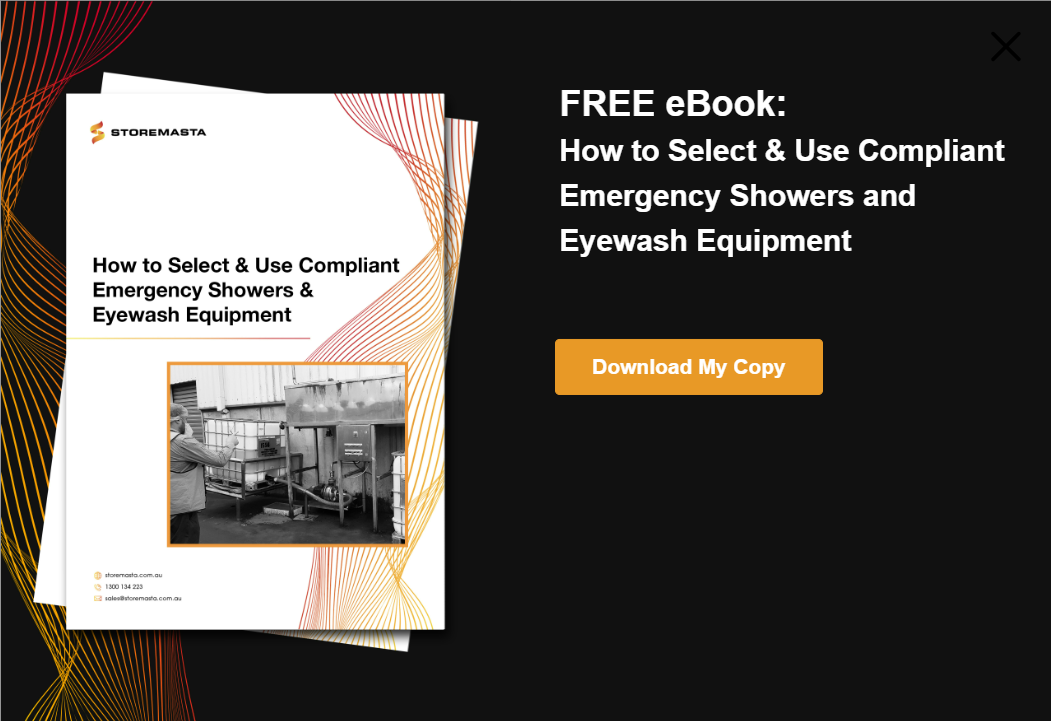Emergency decontamination equipment, such as eyewash facilities and safety showers, require ongoing care and proper maintenance to remain in good working condition. If the equipment isn’t used in the way that it should be, it won’t be safe and effective in the event of a fire, chemical emergency or contamination accident. Here at STOREMASTA, we often find that workplaces have let quality safety equipment become non-compliant, simply due to poor housekeeping practices or deliberate misuse by staff.
This post will help you maintain your eyewash facilities and safety showers, by identifying 5 ways your workers and contractors may misuse your safety equipment. We’ll also show you some simple ways that you can rectify this behaviour — and maintain the compliance and safety of your emergency decontamination equipment.
REMEMBER: Using a safety shower, eyewash unit, or drench hose inappropriately exposes each unit to additional wear and tear and may reduce the service life of the equipment.
5 Things Staff Shouldn’t Do with Emergency Decontamination Equipment
While equipment can be misused in a variety of ways – through lack of adequate training or just a general disregard for the facilities – we have noted 5 common ways that staff incorrectly use emergency decontamination facilities. By knowing what not to do, you can implement procedures and additional training, so that all staff are up-to-speed with how to correctly use and maintain their emergency decontamination equipment.
1. Hand Washing and Personal Hygiene
Don’t allow your workers to get into the habit of using showers, drench hoses and eyewash stations as a drinking fountain or place to rinse off after coming in from the hot sun.
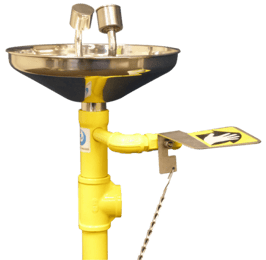
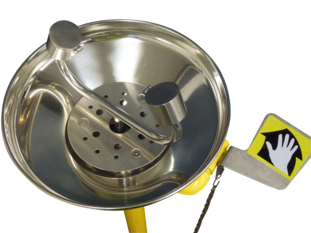
Staff shouldn’t be using emergency facilities as a tap to clean their hands and bodies.
An emergency can happen at any time, to anyone, on any shift — and a worker washing their face could create an unnecessary obstruction. Every second counts for an injured worker who is severely burned or is blinded by acid, so make sure each unit is always ready to save a life.
Correct inappropriate use by:
- Providing personal wash stations that are easily accessible to work areas.
- Having staff keep personal care products in their lockers or restrooms.
- Supervising workers and disciplining repeated incidences.
2. Cleaning Work Tools and Equipment
Using a decontamination station to clean work tools and equipment can introduce dangerous substances to an area that is designed to serve an injured worker.
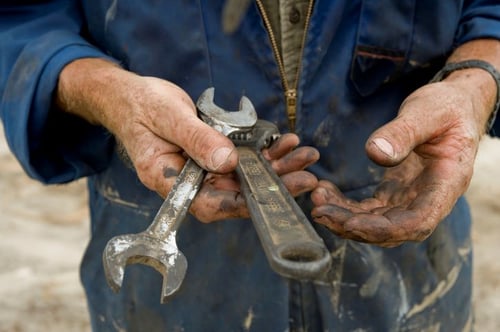
Cleaning items, such as tools and equipment, in emergency facilities will contaminate the area.
There are documented cases where workers have suffered additional injuries after being exposed to chemical residues on eyewash nozzles. In one incident, it was because lab employees were using a bench-mounted eyewash for rinsing chemicals from glassware — instead of walking all the way to the sink.
We suggest the following:
- Training staff in the correct methods of cleaning and maintaining working equipment.
- Installing accessible wash stations for cleaning working equipment.
- Ensuring managers and supervisors are leading by example and providing enough supervision.
3. Disposing of Waste Materials
Sometimes, staff may not know what to do with a strange liquid — and may pour it down the sink or into the nearest drain. Other times, staff are simply too lazy to follow the correct procedures for the disposal of liquid chemicals.
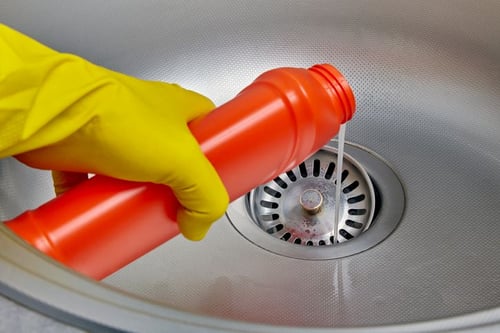
Don’t ever dispose of chemical substances down the drain of your eyewash or safety shower.
Whatever the reason, disposing of potentially hazardous waste — in and around the safety shower or eyewash — can contaminate the equipment. This unsafe practice will render the equipment unsafe for emergency treatment.
Corrosive waste could also damage the equipment or react dangerously with the construction materials or componentry.
Implement the following to improve the safety of equipment:
- Having a waste disposal procedure, as well as waste facilities for different chemicals, dangerous goods and hazardous substances.
- Training staff to understand the dangers of incorrect waste disposal and the contamination risks they are putting on their co-workers (and themselves).
- Empowering workers to notify a supervisor if they are unsure of how to dispose of hazardous waste.
4. Clogging the Area with Obstructions
When selecting an installation location for your emergency equipment, you must ensure that there is a clear path between the emergency decontamination station and the chemical hazard. As a requirement of the Australian Standard AS 4775-2007 - Emergency eyewash and shower equipment, this guideline enables the emergency decontamination of workers in the shortest possible timeframe.
Therefore, you must not allow your workers to clog up the path with pallets, raw materials, PPE, stationery supplies or personal items. This will not only put your equipment in non-compliance, but it could also mean the difference between a minor injury and a major health issue.
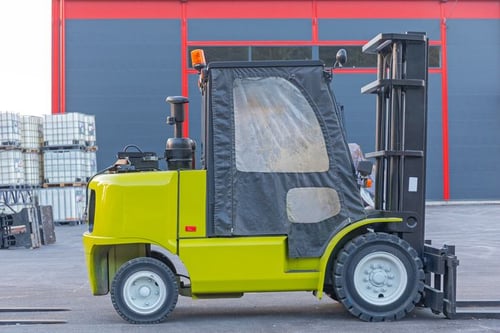
You are required to keep a clear path between your equipment and a chemical hazard.
Sometimes workers from other departments don’t understand the logistics of different work areas and may unwittingly park a forklift or leave an IBC in the wrong place.
You can improve staff behaviours by:
- Providing team members with lockers and areas to store personal effects.
- Rationalise your work areas by installing a range of dedicated chemical cabinets, under-bench storage units, and cupboards for PPE and tools.
- Train workers from other departments not to leave equipment or machinery in the path of the decontamination station.
5. Failing To Carry Out Maintenance
It is a requirement of the Australian Standards that emergency showers and eyewash stations, which are connected to a permanent water supply, must be inspected and activated every week.
This activation of the equipment clears the lines of sediment and blockages. It also ensures that each unit is always fully operational.
There are also further requirements to ensure that units are always:
- Inspected, tested and tagged for annual compliance by a qualified technician.
- Kept in complete working order and any faults or damage quickly rectified.
- Visible to the entire area being served by the shower or eyewash.
- Are fitted with a compliant warning placard.
REMEMBER: Failing to carry out required maintenance and integrity testing could leave an injured worker without access to decontamination equipment. Imagine a worker blinded by a caustic substance who has to be led to another eyewash station because the one in their work area is damaged and inoperable.
Counteract inappropriate use by:
- Introducing an inspection checklist for staff in charge of weekly activation and testing. Have the checklist submitted to the HSE Manager for co-signing.
- Programming the activation tests during off-peak times or during scheduled maintenance so theses duties are not left as an afterthought.
- Including inspections and maintenance as required duties in job descriptions.
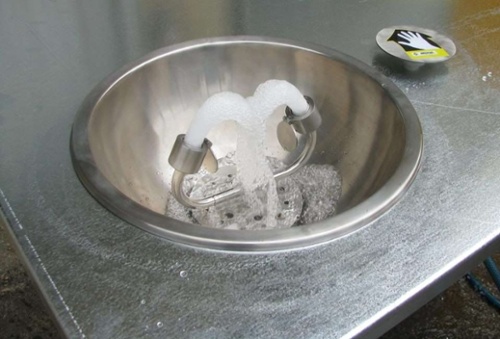
Emergency decontamination facilities need to be activated every week.
Using and Maintaining Your Emergency Eyewash and Shower Facilities
Proper care of your emergency decontamination equipment is an essential requirement of Australian Standard AS 4775-2007. Using and maintaining your eyewash and shower facilities in the correct manner will also improve staff safety and increase the longevity of your equipment. If you’d like to learn more about keeping your safety showers and eyewash units 100% compliant, why not access our helpful guide? Our eBook, How To Select and Use Compliant Emergency Showers and Eyewash Equipment, is filled with expert advice on how to choose, install, use and maintain your facilities. Read our free eBook today by clicking on the image below.
Joining the team as a Dangerous Goods Storage Consultant, Melissa Hampton became Storemasta's Marketing Manager in late 2021. With extensive knowledge and experience in chemical compliance, Melissa is responsible for leading the Marketing team and helping shape their marketing strategy. In her spare time, you can find Melissa hiking, swimming and enjoying the great outdoors in beautiful north-west Tasmania.
